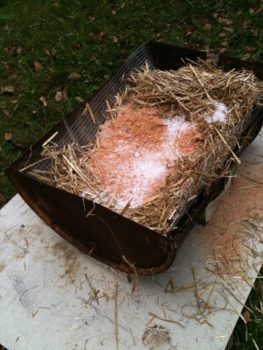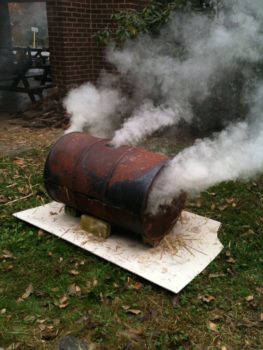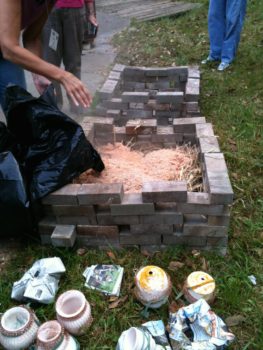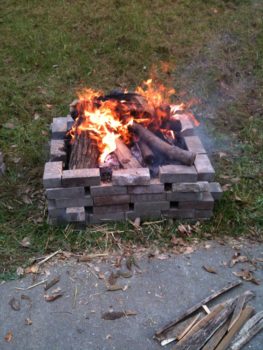I typically use four different firing processes: soda, oxidation, reduction and sawdust.
Soda firing is a atmospheric firing process which means the air around each piece has a key impact on how each vessel turns out. “Soda” (sodium bi-carbonate or sodium carbonate) is mixed with water and sprayed into the kiln near peak temperature. The sodium becomes a glaze when combined chemically with the clay elements. Depending on where the piece is located relative to the kiln burners, one side of the piece may be mottled with a heavily glazed area and other side “flashed” with a dry or brilliant orange flame pattern.
The terms oxidation kiln and reduction kiln refer to how much oxygen is in the kiln’s atmosphere while the kiln is firing. An oxidation atmosphere has plenty of oxygen for the fuel to burn. A reduction atmosphere occurs when the amount of available oxygen is reduced. The same clay body will fire to a difference color depending on whether it is fired in an oxidation or reduction atmosphere.
A sawdust firing is a low temperature firing of bisque ware in sawdust, wood chips and a variety of materials such as coffee grounds and banana peels to achieve black and gray carbonization patterns burnt into the surface. The sawdust is lit from the top with newspapers and a lighter. Once it is burning away, the barrel is covered and left to smolder until cooled.
- Loading barrel with straw and salt.
- Firing barrel.
- Loading with sawdust.
- Firing with wood.



